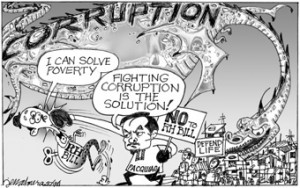IT’S TRAGIC that it had to take the death of journalist Chit Estella for officialdom to again turn its attention to road safety, particularly on the infamous Commonwealth Avenue in Quezon City. It’s terrible that someone such as she, respected by her peers in journalism and in the academe, and by the young people she was mentoring at the University of the Philippines, should be cut down so brutally in her prime. It’s criminal that not one but two buses were actually involved in the accident that took her life, the first tearing off her taxi’s side mirror and the second delivering the fatal, devastating, blow.
Last year, per the records of the Metropolitan Manila Development Authority, more than 2,000 vehicular accidents occurred on Commonwealth Avenue, killing at least 21 people and injuring 608 others. The agency is less than forthcoming on the figures so far for this year (two boys were killed in separate accidents early Wednesday), but can anything else dramatize the state of the so-called “killer highway” than Estella’s shocking extinction?
The details, as recounted by family and friends and reported in the media, make her death as poignant as it is enraging. Her horoscope for that Friday the 13th—that something “evolutionary” and “life-changing” was afoot—had somewhat thrilled her, leading her to quip that perhaps she was finally going to win the lotto jackpot. At about 6 p.m. she was heading to meet with high school friends for dinner, at the end of which her husband was to collect her. The inconceivable impact of the crash (as shown in footage of the cab shrunk almost by half) injured her so severely that she was declared dead on arrival at the hospital to which she was taken. Her last heard utterance was “Bakit (Why)?”—as though demanding of the universe the reason behind her abrupt departure.
But the question acquires dimensions other than existential particularly because the 18-lane, 12.4-kilometer highway, ideally wide and wonderful and suggesting strides in technology, has come to represent a breakdown of civility, of law and order. Drivers of public utility vehicles, bus drivers particularly, are yoked to the exigency of making the daily “boundary” and therefore barrel down the avenue in arrogant disregard for the 60-km-per-hour speed limit, in a race to snatch passengers from their fellows. A great number of them are stoned out of their skulls by drugs that allow them the superhuman feat of staying behind the wheel for an excessive number of hours. An equally great number is plainly ignorant of traffic laws and the very basic rules of driving, even of civilized behavior. And we’re not even beginning to talk about law enforcers that reinforce the general lawlessness for the vulgarity of merienda money.
MMDA Chair Francis Tolentino laments that the crash that killed Estella is “the first major accident that happened on Commonwealth since we implemented the new automated program in January.” He means the imposition of the 60-kph speed limit, the segregation of lanes for buses, motorcycles, jeepneys and private vehicles, as well as those using the U-turn slots, and the installation of traffic cameras and speed guns to pick out speeding drivers.
Now the MMDA is considering mounting radar speed guns on its motorcycle units to go after speeding drivers, especially those in buses.
But, again, Tolentino appears to be focusing mainly on the externals, the tools deemed appropriate to identify and apprehend those who break traffic and driving laws. We submit that something else is necessary, something as fundamental as a radical change in perspective. To solve the problem of the “killer highway,” it behooves public utility drivers and other motorists, as well as law enforcers, pedestrians and passengers, to be re-educated on what has been all but forgotten in the scramble to survive the savagery of the day to day: civility, decency, the value of life.
Had these been in place, Estella would still be at work on her book and other unfinished business. She would not have been snuffed out in the early evening of May 13, in that interlude of the half-light when the day surrenders to the dark.
